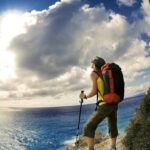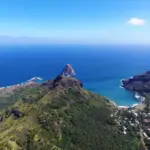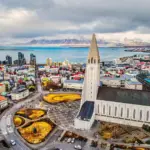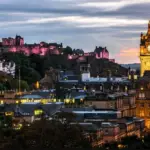
A Refuge of Exuberant Biodiversity and Conservation
South Africa's Natural Treasure
THE Kruger National Park is a true natural treasure nestled in the stunning South African landscape. Recognized as one of the largest wildlife reserves on the African continent, the park covers an impressive 19,485 km².
With its untouched beauty and unique biodiversity, Kruger is a rare gem that attracts nature lovers and wildlife enthusiasts from around the globe. Upon entering Kruger National Park, visitors are immediately enveloped by the sense of adventure and wonder that permeates the environment.
The park's vastness offers a wide variety of habitats, from vast open savannas to dense tropical forests and meandering rivers. This diversity supports a vibrant ecosystem home to thousands of plant and animal species.
The history of Kruger National Park dates back more than a century. It was established in 1898 by then-South African President Paul Kruger, with the primary purpose of protecting wildlife threatened by overhunting.
Since then, the park has been a beacon of wildlife conservation. Its significance transcends South Africa's borders, having been declared a UNESCO World Heritage Site in recognition of its exceptional value to humanity.

The Majestic Geographical Location of Kruger National Park
Kruger National Park enjoys a privileged location in the Mpumalanga and Limpopo provinces of South Africa. Located in the northeast of the country, the park spans a vast area covering over 19,485 km². Its strategic location makes it easily accessible to both South Africans and international tourists seeking a unique African wildlife experience.
Exploring the Vast Expanse of Kruger National Park
At an impressive 19,485 km², Kruger National Park is one of the largest and most expansive national parks on the African continent. This vastness provides visitors with the opportunity to immerse themselves in an unparalleled natural environment and discover incredible landscapes ranging from rolling plains to dense tropical forests. The park is so vast that it is home to six major rivers—the Luvuvhu, Letaba, Olifants, Sabie, Crocodile, and Shingwedzi—each playing a key role in maintaining the park's rich biodiversity.
Furthermore, its vast expanse allows for the coexistence of diverse ecosystems within the park itself, creating unique ecological niches for a diverse array of wildlife. This unparalleled diversity attracts nature enthusiasts and birdwatchers from around the world.
Kruger National Park is a natural treasure trove, home to an incredible variety of ecosystems that harmoniously intertwine throughout its expanse. Vast savannah plains dominate the landscape, their golden grasses waving under the African sun. These savannas provide the perfect habitat for herds of herbivorous animals that graze and roam freely. In addition to the savannas, the park is also enriched by lush forest landscapes.
The dense forests are home to a rich diversity of plant and animal species. Here, majestic trees like the baobab and marula tower above the lush vegetation, providing shelter for colorful birds and playful primates. Kruger National Park is also crisscrossed by meandering rivers that add charm and vitality to the landscape. The Sabie River is one of the park's main waterways, nourishing the wildlife and surrounding vegetation. Along the riverbanks, a vibrant mosaic of wildlife can be found nesting in unique aquatic environments.

Incredible Wildlife Diversity
Kruger National Park is renowned for its rich biodiversity and is one of the few places in the world where the famous "Big Five" can be seen. These majestic animals—powerful lions, imposing elephants, agile leopards, robust rhinos, and formidable buffalo—are considered the five most difficult animals to hunt on foot. Through successful conservation efforts and the fight against the illegal trade in ivory and rhino horn, these iconic species still thrive in the park's protected environment.
However, Kruger National Park's biodiversity isn't limited to the "Big Five." The park is home to an incredible variety of other animals that dazzle visitors with their natural beauty. Herds of migrating wildebeest cross the plains in search of fresh pasture. Elegant giraffes reach impressive heights to reach the leaves of acacia trees. Swift cheetahs pursue graceful gazelles in thrilling scenes of wildlife.

Over 500 Bird Species
Kruger National Park is a true paradise for bird lovers, home to an impressive diversity of species. With over 500 recorded species, the park offers a unique ornithological spectacle. Its distinct landscapes and ecosystems attract a wide variety of birds, from small, colorful songbirds to majestic eagles.
Migratory birds also make the park their temporary home during the most favorable seasons. Species such as the greater flamingo and the European bee-eater can be seen at certain times of the year, adding even more fascination to an already wildlife-rich environment. Birdwatchers have the unique opportunity to witness the magic of birds' melodic songs while exploring the trails and roads of Kruger National Park. Every turn can reveal new species and unforgettable moments that create lasting memories.
Wildlife Conservation and Protection
Kruger National Park has a rich history of wildlife conservation and protection, serving as a notable example of success in this area. Since its creation in 1898, numerous measures have been implemented to ensure the preservation of the park's fauna and flora.
Ongoing Efforts to Preserve Wildlife
Kruger National Park authorities have been working tirelessly to combat threats to wildlife, such as poaching and habitat loss. Intensive patrol programs have been implemented to monitor and protect the animals from poachers. This includes the use of advanced technology, such as surveillance cameras and drones, as well as collaboration with local law enforcement agencies to make arrests.
To ensure the survival of endangered species, the park has also developed special captive breeding programs. They work closely with international conservation organizations, sharing knowledge and resources to improve these animals' chances of survival.

Promotion of Sustainable Tourism
By promoting sustainable tourism in Kruger National Park, authorities aim to raise awareness of the importance of wildlife conservation among local communities and visitors. Efforts are made to educate people about the importance of preserving the ecosystem and how they can contribute to wildlife protection.
Furthermore, the park has implemented strict measures to minimize the negative impact of tourism on the area. Speed restrictions, designated routes, and strict guidelines are enforced to ensure the animals are not disturbed, allowing them to live in their natural environment without excessive human interference.
Conclusion
Kruger National Park is a remarkable example of success in terms of wildlife conservation and protection. The continued efforts of the park authorities, combined with public awareness and a commitment to sustainable tourism, have contributed significantly to preserving this unique natural treasure. However, it is important to remember that wildlife conservation is an ongoing effort that requires the continued involvement of all stakeholders to ensure a sustainable future for endangered species and their habitats.
Lucas Wanderlust has a tireless spirit of adventure, always seeking new travel experiences. Fascinated by the world and the possibility of exploring unknown destinations, he fell in love with the sense of freedom and self-discovery that traveling alone provides. With a backpack on his back and a heart open to the unknown, Lucas embarks on exciting journeys, where each destination becomes a unique chapter in his life story. He gives himself body and soul to the magic of solo travel, inspiring others to follow in his footsteps and discover themselves through adventure.







